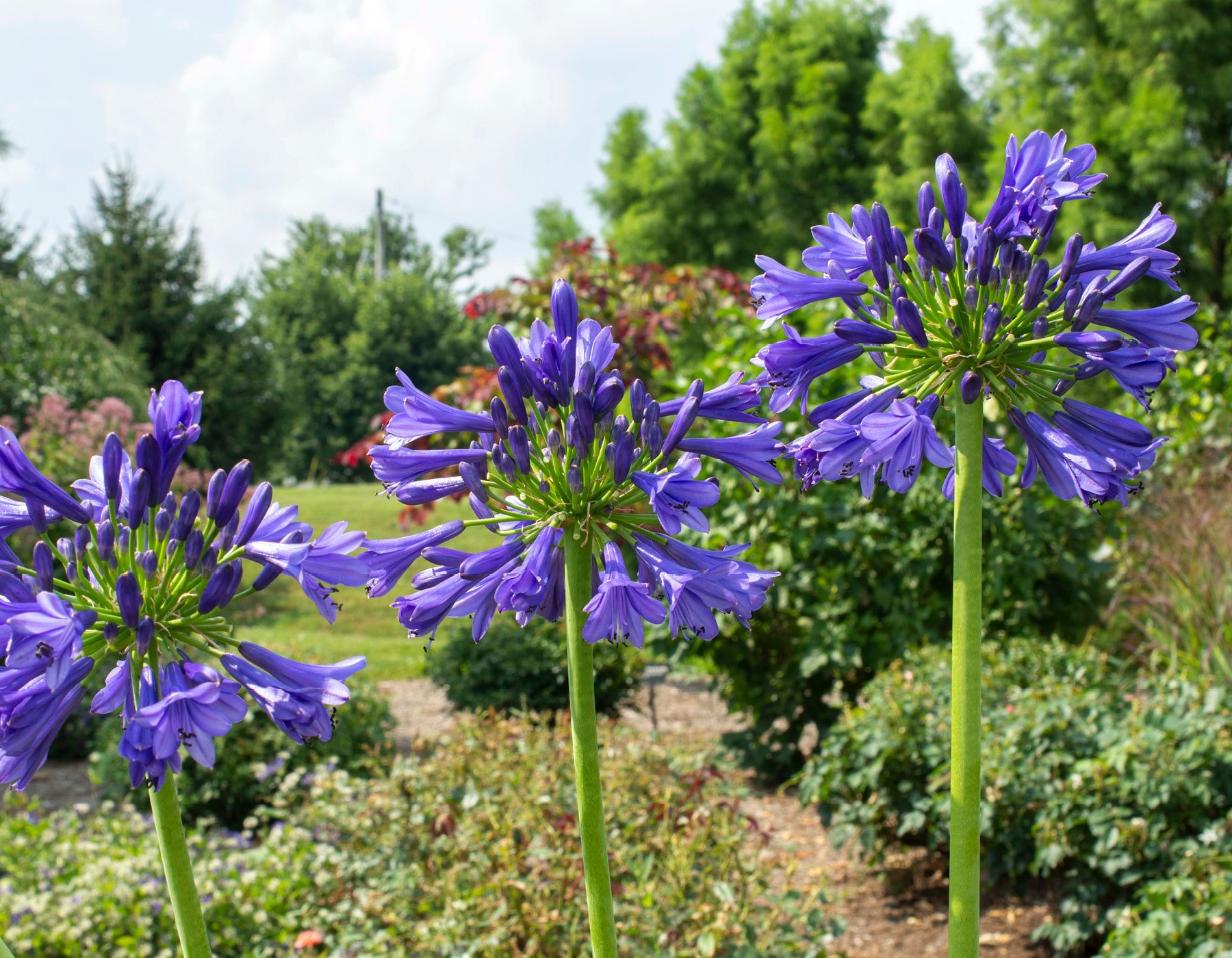Unleashing the Secret to Effective Agapanthus Farming: Tips and Techniques for a Flourishing Garden
In the world of gardening, growing agapanthus successfully needs a tactical technique that encompasses various facets of plant care. By understanding the nuances of agapanthus farming, one can create an atmosphere where these plants prosper and bloom generously.
Planting Agapanthus: Finest Practices
When growing Agapanthus, proper dirt prep work is vital for ensuring successful development and growth of these stunning flowers. Agapanthus, typically called Lily of the Nile or African lily, grows in well-draining dirt with a slightly acidic to neutral pH degree - Agapanthus. Before planting, it is crucial to modify hefty clay soils with raw material such as garden compost or peat moss to enhance drainage and supply essential nutrients for the plants
To plant Agapanthus, select a location that gets complete sunshine to partial color, as this will certainly advertise healthy growth and abundant flowering. Dig an opening two times the diameter of the plant's origin ball and position the Agapanthus at the same deepness it was formerly expanding. Delicately backfill the opening with dirt, weighing down firmly to eliminate any air pockets around the origins.
Water the recently planted Agapanthus extensively and remain to maintain the soil equally damp, especially throughout the plant's active growing period. Agapanthus. Using a balanced fertilizer once a month can additionally support the plant's growth and blooming. By following these best methods for growing Agapanthus, you can develop a stunning display screen of these fascinating blossoms in your garden
Perfect Dirt Conditions for Agapanthus
For optimum growth and growing success of Agapanthus plants, making certain the soil conditions are ideal is crucial. Agapanthus likes dirt that is abundant in nutrients, so including a balanced plant food throughout the expanding period can advertise healthy growth and dynamic blooms.

Watering and Fertilizing Tips
To make certain healthy and balanced development and dynamic blooms, proper watering and feeding methods are important for effective Agapanthus growing. Agapanthus plants benefit from routine watering, especially throughout the growing period.
When it involves feeding Agapanthus, a balanced fertilizer with equivalent components nitrogen, phosphorus, and potassium can be applied in the springtime to promote healthy development and flowering. Slow-release fertilizers are suitable for offering nutrients gradually over a prolonged duration. Prevent over-fertilizing, as this can result in too much foliage growth at the expense of flowers.
Furthermore, including raw material like garden compost into the dirt can improve nutrient levels and enhance soil framework, aiding in the total health of the Agapanthus plants. By following these watering and feeding suggestions, gardeners can guarantee their Agapanthus plants thrive and create magnificent screens of blossoms.
Trimming and Deadheading Techniques
Proper trimming and deadheading techniques play a critical role in keeping the health and wellness and aesthetics of Agapanthus plants, matching the vital methods of watering and feeding for successful farming. Trimming Agapanthus entails getting rid of spent flower heads, yellowing or dead fallen leaves, and general shaping of the plant to advertise better development. Deadheading, the procedure of removing faded blossoms, not only improves the plant's appearance yet also urges further flowering.
When deadheading Agapanthus, it is recommended to snip off the flower stem at the base using sharp, clean shears. This process redirects the plant's energy from seed production back right into origin and foliage development, advertising a healthier and a lot more durable plant. Normal deadheading can expand the blooming duration of Agapanthus and prevent self-seeding, which can cause congestion.
In terms of trimming, Agapanthus typically take advantage of a light trim after flowering to clean the plant and urge fresh development. Reducing the spent flower stems and removing any type of dead or broken foliage assists keep the plant's vitality and total appearance. However, it is important to prevent reducing into the crown of the plant, as this can link weaken its wellness.

Protecting Agapanthus From Vermins and Diseases
Implementing reliable bug and illness management techniques is crucial to securing the health and vigor of Agapanthus plants in farming. One typical insect that affects Agapanthus is the Agapanthus borer, a caterpillar that tunnels right into the plant, triggering damages to the blossoms and fallen leaves.
In addition to parasites, Agapanthus are prone to illness such as origin rot and fungal leaf spots. These problems can frequently be prevented by making certain correct water drainage and avoiding overwatering. If indications of disease show up, impacted components of the plant need to be immediately removed to stop more spread. Fungicides may additionally be used as a treatment action, adhering to the producer's directions meticulously. By staying cautious and attending to pest and condition issues quickly, garden enthusiasts can help their Agapanthus flourish and prosper.

Conclusion
Finally, successful cultivation of agapanthus requires proper growing strategies, optimal soil conditions, sufficient watering and feeding, normal trimming and deadheading, and defense from bugs and diseases. By following these see techniques and ideas, gardeners can guarantee a growing garden filled with gorgeous agapanthus blossoms. Agapanthus. Keep useful reference in mind to preserve regular care and attention to information to promote the wellness and longevity of these spectacular plants
When planting Agapanthus, appropriate soil preparation is necessary for making sure effective development and growth of these stunning flowers.Water the recently planted Agapanthus thoroughly and continue to maintain the soil equally damp, particularly during the plant's energetic growing season.For optimum development and growing success of Agapanthus plants, making sure the soil conditions are excellent is vital. When hair transplanting or growing Agapanthus, make sure the soil is well-prepared to supply the needed foundation for the plants to establish themselves successfully. One usual insect that affects Agapanthus is the Agapanthus borer, a caterpillar that tunnels into the plant, causing damage to the blossoms and leaves.